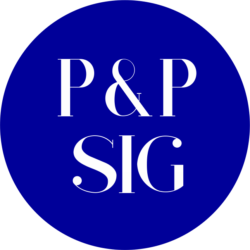Proceedings-1998; By Raymond Urgo; Summary by Maria Christophel (2006)
This article defines the terminology and the scope of policies and procedures and introduces an Assessment Model for measuring the level of policies and procedures programs developed in a corporate structure. The model measures the grade in consideration to the functions provided by the program. It states that the model plays a synergistic role measuring the contribution of P&P to the organization.
Policies and Procedures – Opportunities Await Technical Communicators
Intercom-November 2005; By Raymond E. Urgo; Summary by Maria Christophel (2006)
This article discusses the various opportunities that await technical communicators in the world. It explains the reasons policies and procedures documentation is awakening interest in the business community. It provides a clear hierarchy of talents and skills required to achieve a career in policies and procedures documentation.
Documenting ISO 9001 Compliance
Intercom-Febr /uary 2002; By Kelly A. Parr; Summary by Maria Christophel (2006)
This article provides background information on ISO 9000 and the reasons for complying with ISO 9001 requirements. It lists the five sections of the 9001 requirements and points these requirements as the basis for the audit of the documentation. It advises to purchase a copy of the ISO requirements, before preparing a documentation plan, for becoming familiar with the pyramid structure of the documentation process. It defines the need to establish an empowered employee task force including internal and external auditors. The author stresses the importance of performing detailed gap analysis, organizing the content according to schedules and milestones, writing the content according to the ISO pyramid levels, performing peer reviews, coordinating training prior to the implementation of procedures, and performing the audits for ensuring the quality of the documentation.
Creating a Paradigm Shift In Managers and Professionals Who …
Proceedings-1994; By Verna Richardson; Summary by Maria Christophel (2006)
This article narrates the activities the policies and procedures writer performed to change managers’ and professionals’ view of standards. It explains some of the steps involved in the project initiation phase such as researching, recommending changes, and implementing the project. It relates the methods the writer used for marketing the project and obtaining support such as outlining the benefits to the different groups, explaining the concept of structured writing and becoming a Reader Advocate. The article enumerates the rights of readers in The Richardson Readers’ Bill of Rights. Lastly, the article relates the benefit of cross-functional teams, which were created by the acceptance to the project and the adoption of the new standards by staff, managers and professionals of the entire organization.
1996-Policies and Procedures PIC Meeting
Proceedings-1996; By Raymond Urgo; Summary by Maria Christophel (2006)
This agenda provides information about the status of the P&P SIG and the accomplishments for the past year. It outlines the new business items to be: raising issues relevant to P&P and the PIC; developing action plans for PIC and upcoming conferences; engaging volunteers to assist with operations.
1995-Policies and Procedures PIC Meeting
Proceedings-1995; By Raymond Urgo; Summary by Maria Christophel (2006)
This agenda provides information about the status of the P&P SIG and the accomplishments for the past year. It reports on the willingness of the P&P SIG members to assist as volunteers. It also notifies that four teams were created for managing: membership, newsletters, programs and projects, and public relations.
1994-Forming a Policies & Procedures Professional Interest Committee
Proceedings-1994; By Raymond Urgo; Summary by Maria Christophel (2006)
This agenda provides details for one of the Annual STC Meeting agenda items. The item establishes the need to create a Professional Interest Committee (PIC) for assisting and uniting the writers of policies and procedures as one of the various groups of technical writers who are members of the STC. It proposes the PIC’s mission, goals, scope, and activities; and it invites policies and procedures writers to join and volunteer to participate in this committee.
Who Should Document Organizational Policies & Procedures
Proceedings-2002; By Raymond Urgo; Summary by Maria Christophel (2006)
This article addresses the typical situations and the typical solutions that organizations follow when documenting operational policies and procedures. It explains the unrealistic demands placed on employees and the effects of non-participation in the development of procedures. It also explains the common solutions such as hiring a writer, developing a program for employee participation, and training employees to write procedures. The article comments on the need to establish a team among supervisors, management, employees, and the stakeholders to support the efforts of a technical writer with writing and editing skills for producing performance-based communication.
Technical Writing in the Financial Industry
Intercom-April 2005; By Sandy J. Larsen; Summary by Maria Christophel (2006)
This article establishes the job requirements placed by the financial industry when hiring technical writers making them practically unable to qualify for the job. The author proofs through research that several writers have entered the financial field as writers with no knowledge of banking, finance, or mergers and have become successful. The author states that it is possible for qualified technical writers to transition into another field of expertise by volunteering services and becoming formally or informally educated in the field the writers want to work.
Standards – New Opportunities for P&P Writers
Intercom-November 2005; By Ralph E. Robinson; Summary by Maria Christophel (2006)
This article discusses in detail the reasons why international standards are opening new opportunities for P&P writers, and how writers should take advantage of such opportunities. The author explains how the International Standards Organization (ISO) creates standards for global industries and why is good for business to comply with ISO requirements. Why are they important; he also provides a great deal of information about how international standards impact on P&P professionals.
